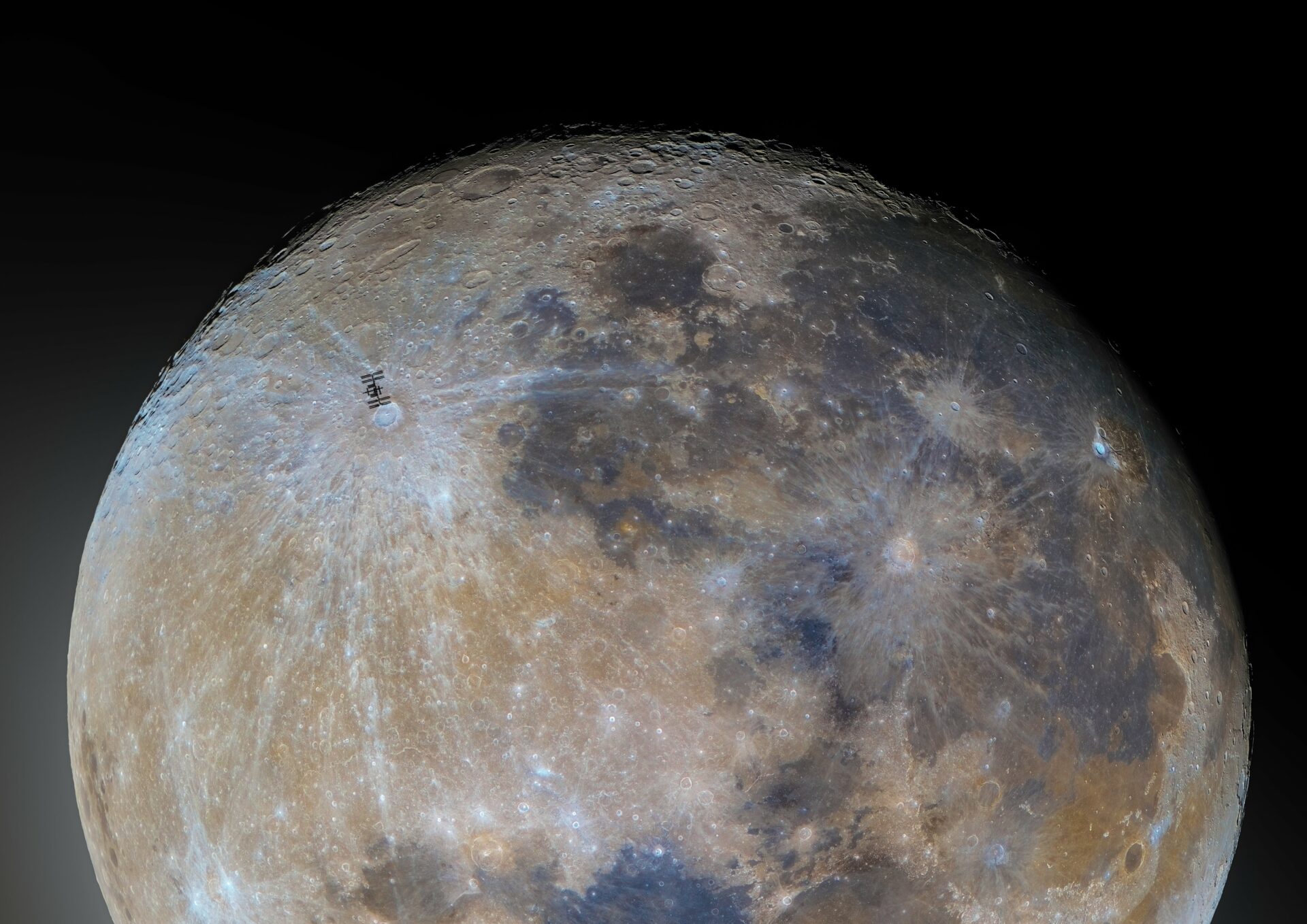Astrophotographer Andrew McCarthy has published an impressive new image. This time he filmed the transit of the ISS over the Tycho crater.

The photo was taken on January 4. McCarthy used two cameras to make the shot. The first filmed the ISS transit itself, the second was used to shoot the Moon. Later, their photos were combined into a single composite image.

Looking at the picture, it seems that the ISS is located directly above the crater. But do not forget that in reality the orbit of the station passes at an altitude of 400 km, while the distance to the Moon is about 380 thousand km.
Dinosaur Era Crater
Tycho crater has a diameter of 85 km. Despite its relatively modest size by lunar standards, it is one of the most noticeable structures on the Moon, which can be easily seen even with the most modest optics.

The prominence of the Tycho crater is explained by its youth. It is very bright and surrounded by a system of characteristic rays stretching hundreds of kilometers across the lunar surface. Since the matter knocked out by the impacts darkens over time due to the bombardment of micrometeorites and the effects of cosmic rays, this suggests that the crater was formed relatively recently.
With a high degree of probability, astronomers know the exact age of Tycho. In December 1972, the Apollo 17 expedition landed in the area through which one of its rays passes and then delivered to Earth a fragment, presumably knocked out of the crater. Subsequent isotope analysis gave a figure of 108 million years. This suggests that Tycho was formed in the Cretaceous period, at a time when dinosaurs still lived on Earth.
You can also read about how Andrew McCarthy photographed the remnant of a supernova that erupted in 1054.
Follow us on Twitter to get the most interesting space news in time
https://twitter.com/ust_magazine

